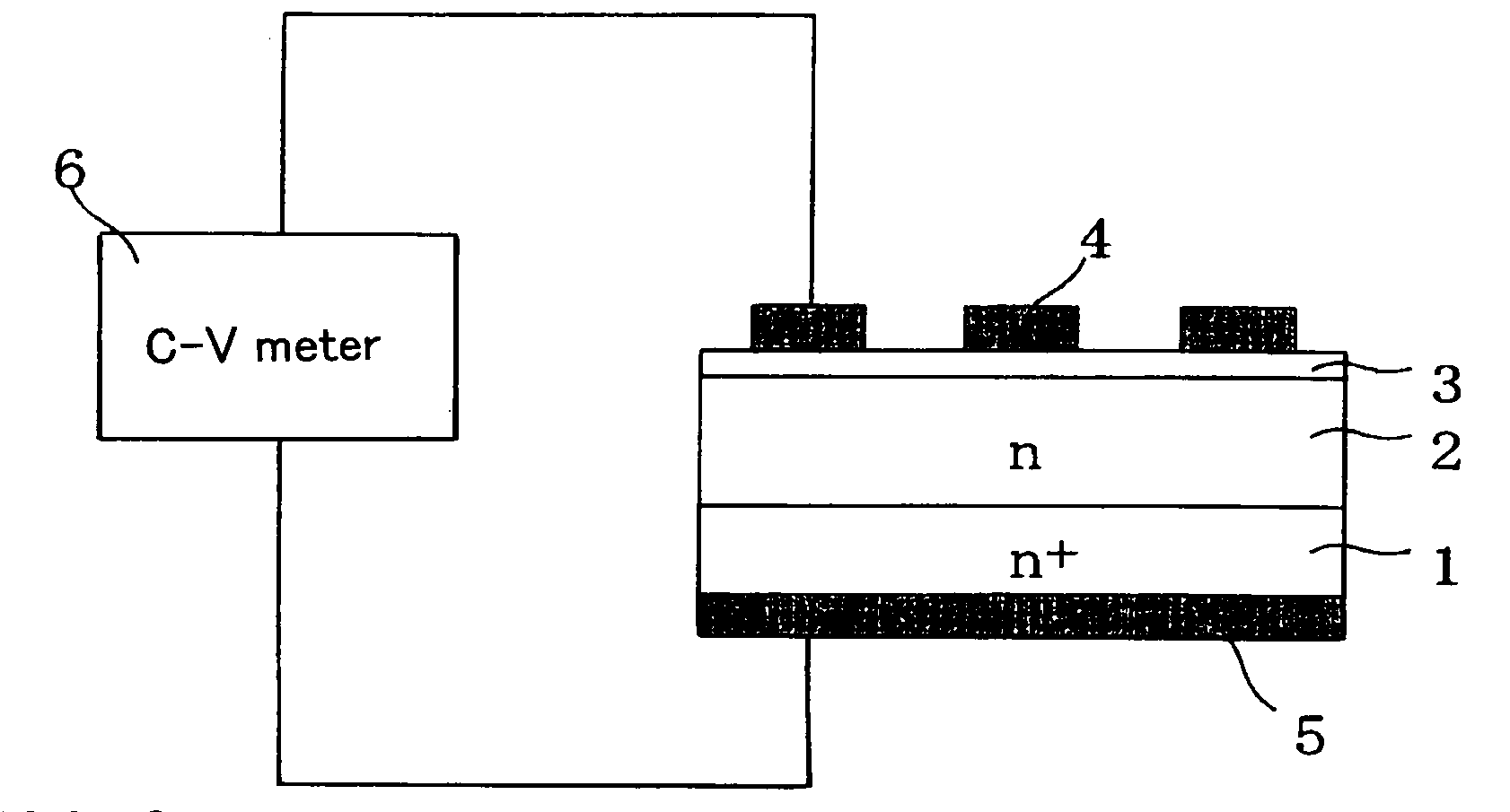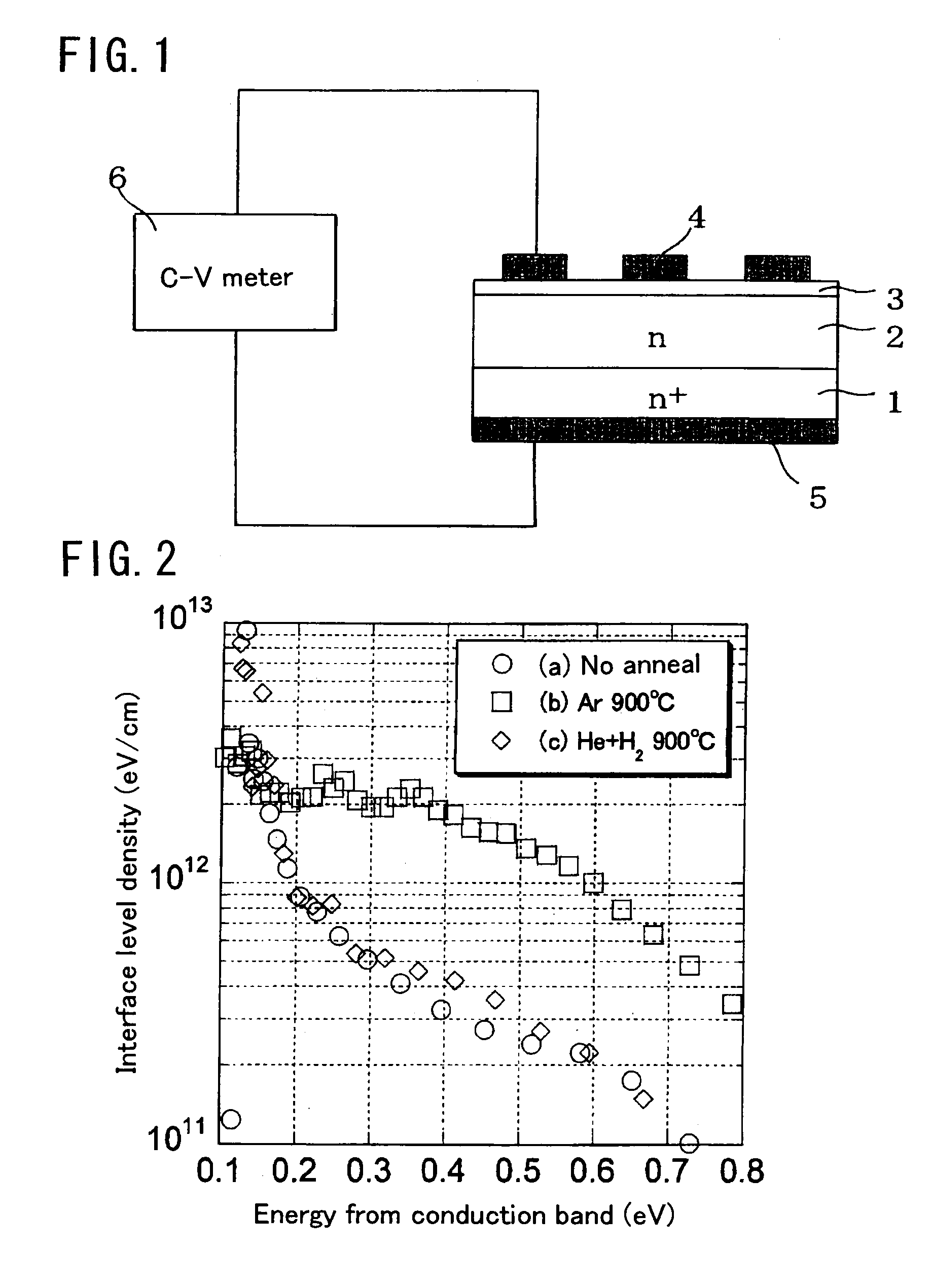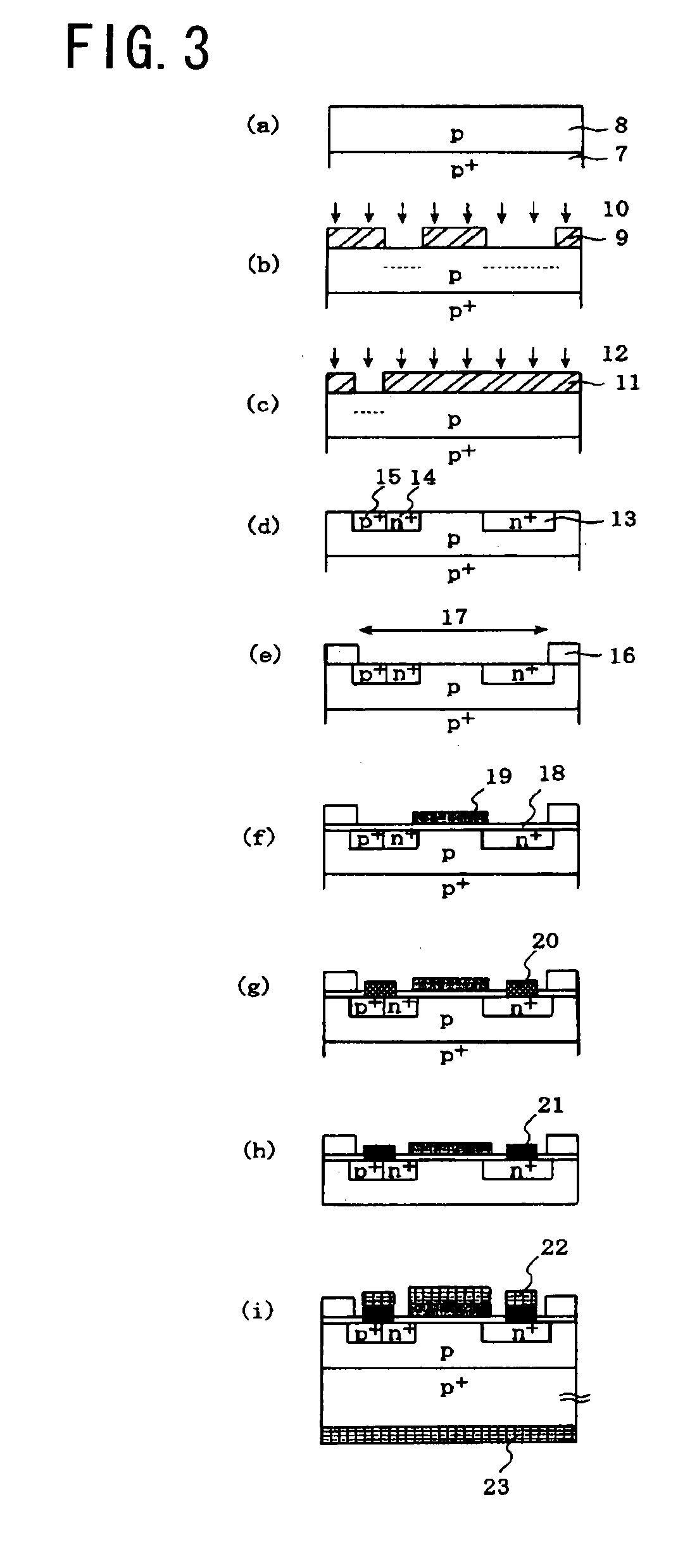Method for manufacturing silicon carbide semiconductor device, and silicon carbide semiconductor device
a semiconductor device and silicon carbide technology, applied in the direction of semiconductor devices, basic electric elements, electrical apparatus, etc., can solve the problems of low channel mobility, inapplicability of techniques optimized on the (0001) plane to the (000-1) plane, and difficulty in reducing on-resistance, so as to reduce ohmic contact and high channel mobility
- Summary
- Abstract
- Description
- Claims
- Application Information
AI Technical Summary
Benefits of technology
Problems solved by technology
Method used
Image
Examples
first embodiment
[0053]this invention will be described with reference to FIG. 1 and FIG. 2.
[0054]FIG. 1 is a diagram that depicts the structure of a MOS capacitor according to this invention.
[0055]This MOS capacitor is fabricated as follows.
[0056]First, an n-type epitaxial film 2 having a donor density of 1×1016 cm−3 is grown on a 0 to 8-degree-off substrate (preferably 0 to 1-degree-off substrate) from the (000-1) plane of an n-type 4H—SiC (000-1) substrate 1. Incidentally, the 4H—SiC substrate in a single form or the 4H—SiC substrate in combination with the epitaxial film will be called a 4H—SiC semiconductor.
[0057]After the 4H—SiC semiconductor is cleaned, it is subjected to wet oxidation at 900° C. over a period of 120 minutes to form an insulating film 3 measuring 50 nm in thickness and cooled to room temperature. The atmosphere used during the cooling may be an inert gas, such as argon or nitrogen, and the switch from the wet atmosphere to the inert gas may take place about 30 minutes prior t...
second embodiment
[0061]Next, this invention will be described with reference to FIG. 3 through FIG. 6.
[0062]FIG. 3 is a cross section drawn for the purpose of explaining the method of this invention for the fabrication of a MOSFET on the silicon carbide (000-11) plane.
[0063]First, a p-type epitaxial film 8 having an acceptor density of 1×1016 cm−3 is grown on a 0 to 8-degree-off substrate (preferably 0 to 1-degree-off substrate) from the (000-1) plane of a p-type 4H—SiC (000-1) substrate 1 as shown in FIG. 3(a). Incidentally, the 4H—SiC substrate in a single form or the 4H—SiC substrate in combination with the epitaxial film will be called a 4H—SiC semiconductor.
[0064]Next, as shown in FIG. 3(b), an SiO2 film measuring 1 μm in thickness is deposited on the surface of a p-type epitaxial film 8 by the low pressure CVD method and patterned by photolithography to form a mask 9. Thereafter, a phosphorus ion 10, for example, is implanted under the conditions, 500° C. in substrate temperature, 40 keV to 25...
PUM
| Property | Measurement | Unit |
|---|---|---|
| temperature | aaaaa | aaaaa |
| temperature | aaaaa | aaaaa |
| off-angle | aaaaa | aaaaa |
Abstract
Description
Claims
Application Information
 Login to View More
Login to View More - R&D
- Intellectual Property
- Life Sciences
- Materials
- Tech Scout
- Unparalleled Data Quality
- Higher Quality Content
- 60% Fewer Hallucinations
Browse by: Latest US Patents, China's latest patents, Technical Efficacy Thesaurus, Application Domain, Technology Topic, Popular Technical Reports.
© 2025 PatSnap. All rights reserved.Legal|Privacy policy|Modern Slavery Act Transparency Statement|Sitemap|About US| Contact US: help@patsnap.com



